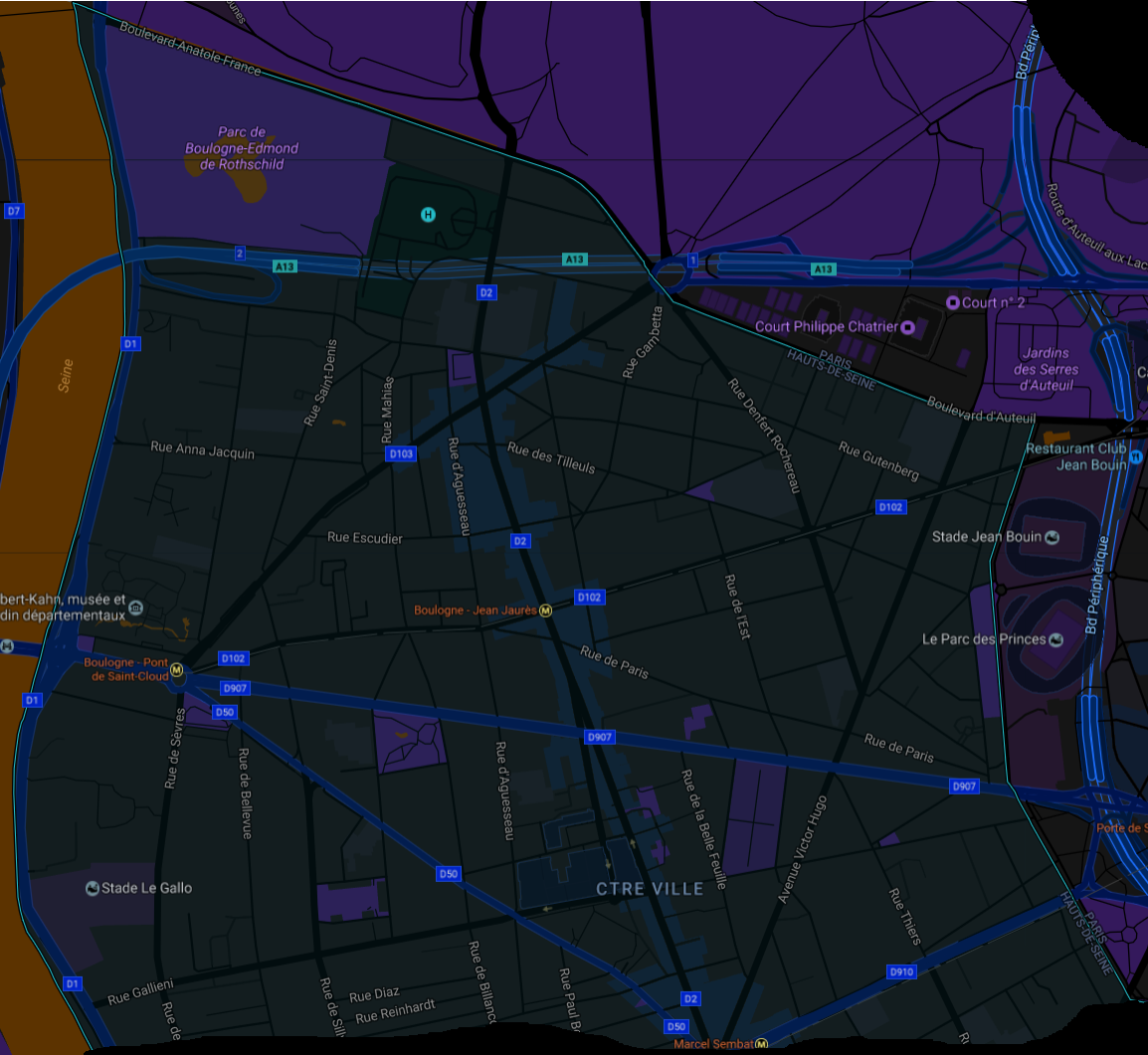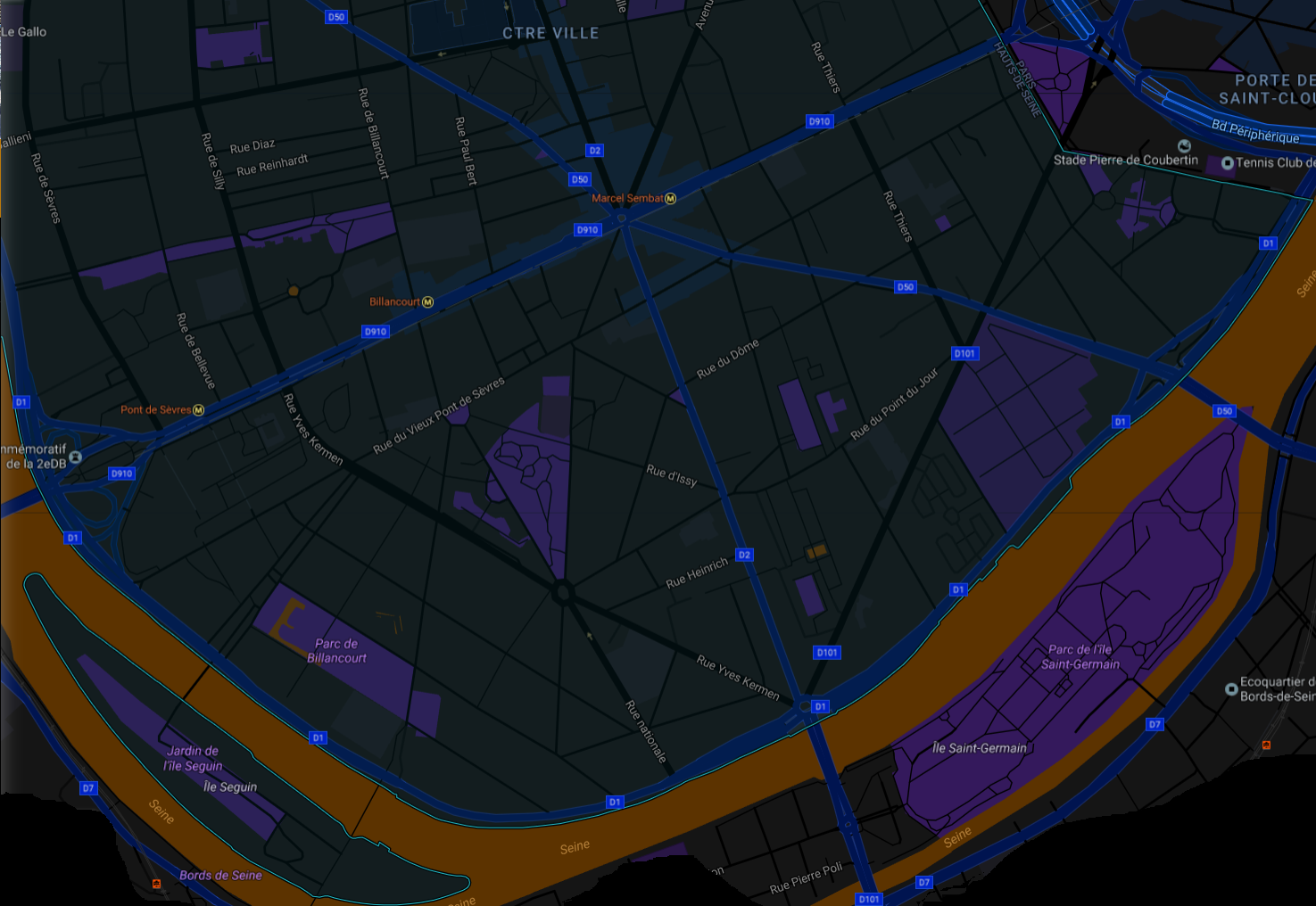Boulogne-Billancourt
Boulogne-Billancourt, often colloquially called simply Boulogne) is a commune in the western suburbs of Paris, France. It is located 8.2 km (5.1 mi) from the centre of Paris. Boulogne-Billancourt is a subprefecture of the Hauts-de-Seine department and the seat of the Arrondissement of Boulogne-Billancourt.
With an average household income in 2013 of €47,592, nearly twice the French average of €25,548, Boulogne-Billancourt is one of the wealthiest cities in France.
Boulogne-Billancourt is the most populous suburb of Paris and one of the most densely populated municipalities in Europe.[citation needed] Formerly an important industrial site, it has successfully reconverted into business services and is now home to major communication companies headquartered in the Val de Seine business district.
History
The original name of the commune was Boulogne-sur-Seine (meaning "Boulogne upon Seine").
Before the 14th century, Boulogne was a small village called Menuls-lès-Saint-Cloud (meaning "Menuls near Saint-Cloud"). In the beginning of the 14th century, King Philip IV of France ordered the building in Menuls-lès-Saint-Cloud of a church dedicated to the virgin of the sanctuary of Boulogne-sur-Mer, then a famous pilgrimage center in northern France. The church, meant to become a pilgrimage centre closer to Paris than the distant city of Boulogne-sur-Mer, was named Notre-Dame de Boulogne la Petite ("Our Lady of Boulogne the Minor"). Gradually, the village of Menuls-lès-Saint-Cloud became known as Boulogne-la-Petite, and later as Boulogne-sur-Seine.
In 1924, Boulogne-sur-Seine was officially renamed Boulogne-Billancourt to reflect the development of the industrial neighbourhood of Billancourt annexed in 1860 (see history section below).
As for the name Billancourt, it was recorded for the first time in 1150 as Bullencort, sometimes also spelled Bollencort. It comes from Medieval Latin cortem, accusative of cors, meaning "enclosure", "estate", suffixed to the Germanic patronym Buolo (meaning "friend, brother, kinsman"), thus having the meaning of "estate of Buolo".
On 1 January 1860, the city of Paris was enlarged by annexing neighbouring communes. On that occasion, the communes of Auteuil and Passy were disbanded and divided between Boulogne-Billancourt (then called Boulogne-sur-Seine) and the city of Paris. Boulogne-sur-Seine received a small part of the territory of Passy, and about half of the territory of Auteuil (including the area of Billancourt, which belonged to the disbanded commune of Auteuil).
Some of the shooting events of the 1900 Summer Olympics took place in Boulogne-Billancourt.
In 1929, the Bois de Boulogne, which was hitherto divided between the communes of Boulogne-Billancourt and Neuilly-sur-Seine, was annexed in its entirety by the city of Paris. On that occasion, Boulogne-Billancourt, to which most of the Bois de Boulogne belonged, lost about half of its territory.
Boulogne-Billancourt is famous for being the birthplace of three major French industries: cinema,[citation needed] automobile with Renault,[citation needed] and aircraft.[citation needed] It is also famous for being the setting of the TV show Code Lyoko.
Transport
Boulogne-Billancourt is served by two stations on Paris Métro Line 10: Boulogne – Jean Jaurès and Boulogne – Pont de Saint-Cloud.
It is also served by three stations on Paris Métro Line 9: Marcel Sembat, Billancourt, and Pont de Sèvres.

